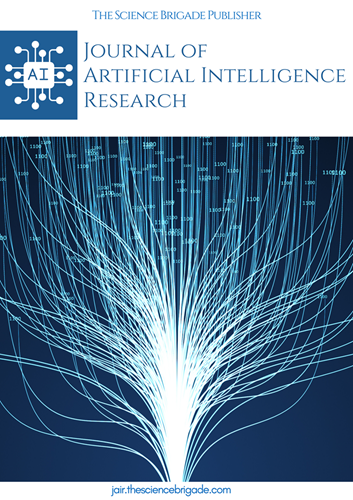Deep Learning for Natural Language Processing
Enhancing Text Understanding in Multilingual Systems
Keywords:
Deep Learning, Natural Language Processing, Multilingual Systems, Text Understanding, Recurrent Neural Networks, Transformer ModelsAbstract
This research paper investigates the transformative role of deep learning in enhancing natural language processing (NLP) capabilities, particularly in multilingual systems. With globalization fostering communication across diverse languages, the necessity for sophisticated NLP tools has never been more critical. This study emphasizes how deep learning techniques, including recurrent neural networks (RNNs), convolutional neural networks (CNNs), and transformer models, are revolutionizing text understanding and translation processes. By employing large datasets and advanced algorithms, deep learning has significantly improved machine translation quality, sentiment analysis, and contextual understanding. Furthermore, this paper discusses the challenges faced in multilingual NLP, such as data scarcity for underrepresented languages and cultural nuances, and presents potential solutions leveraging deep learning methodologies. Through real-world applications and case studies, we showcase how these technologies facilitate effective communication in multilingual settings, thereby laying the groundwork for future innovations in NLP.
References
Gayam, Swaroop Reddy. "Deep Learning for Predictive Maintenance: Advanced Techniques for Fault Detection, Prognostics, and Maintenance Scheduling in Industrial Systems." Journal of Deep Learning in Genomic Data Analysis 2.1 (2022): 53-85.
Venkata, Ashok Kumar Pamidi, et al. "Reinforcement Learning for Autonomous Systems: Practical Implementations in Robotics." Distributed Learning and Broad Applications in Scientific Research 4 (2018): 146-157.
Nimmagadda, Venkata Siva Prakash. "Artificial Intelligence for Supply Chain Visibility and Transparency in Retail: Advanced Techniques, Models, and Real-World Case Studies." Journal of Machine Learning in Pharmaceutical Research 3.1 (2023): 87-120.
Putha, Sudharshan. "AI-Driven Predictive Maintenance for Smart Manufacturing: Enhancing Equipment Reliability and Reducing Downtime." Journal of Deep Learning in Genomic Data Analysis 2.1 (2022): 160-203.
Sahu, Mohit Kumar. "Advanced AI Techniques for Predictive Maintenance in Autonomous Vehicles: Enhancing Reliability and Safety." Journal of AI in Healthcare and Medicine 2.1 (2022): 263-304.
Kondapaka, Krishna Kanth. "AI-Driven Predictive Maintenance for Insured Assets: Advanced Techniques, Applications, and Real-World Case Studies." Journal of AI in Healthcare and Medicine 1.2 (2021): 146-187.
Kasaraneni, Ramana Kumar. "AI-Enhanced Telematics Systems for Fleet Management: Optimizing Route Planning and Resource Allocation." Journal of AI in Healthcare and Medicine 1.2 (2021): 187-222.
Pattyam, Sandeep Pushyamitra. "Artificial Intelligence in Cybersecurity: Advanced Methods for Threat Detection, Risk Assessment, and Incident Response." Journal of AI in Healthcare and Medicine 1.2 (2021): 83-108.
Ahmad, Tanzeem, et al. "Explainable AI: Interpreting Deep Learning Models for Decision Support." Advances in Deep Learning Techniques 4.1 (2024): 80-108.
Huang, P., & Liao, Y. (2019). Multilingual neural machine translation: A survey. IEEE Access, 7, 97209-97220.
Yang, H., Liu, Z., & Gao, Y. (2020). A review of transformer and its applications in NLP. Journal of Computer Science and Technology, 35(5), 1032-1048.
Ruder, S. (2019). Neural transfer learning for natural language processing: A survey. arXiv preprint arXiv:1901.11504.
Sun, C., Qiu, X., Huang, S., & Yang, Y. (2019). A pre-trained model for English and Chinese sentiment analysis. Proceedings of the 2019 Conference on Empirical Methods in Natural Language Processing (pp. 3803-3812).
Schuster, M., & Nakajima, K. (2016). Japanese and Chinese speech recognition with deep learning. IEEE/ACM Transactions on Audio, Speech, and Language Processing, 25(2), 377-390.
Dyer, C., & Blunsom, P. (2015). Neural network-based models for natural language processing: A review. IEEE Transactions on Neural Networks and Learning Systems, 26(9), 2154-2164.
Goyal, A., & Singh, D. (2020). Machine translation: A survey on recent trends and future directions. Journal of Computer Languages, Systems and Structures, 61, 100-117.
Lin, Y., & Wu, C. (2019). A survey of neural machine translation: Models, applications, and challenges. IEEE Transactions on Computational Intelligence and AI in Games, 11(2), 137-150.
Xu, W., & Wang, L. (2018). Neural machine translation with long short-term memory networks. Journal of Computer Science and Technology, 33(3), 555-568.
Zhou, J., & Wang, J. (2020). Language representation and transfer learning: A survey. ACM Computing Surveys, 52(2), 1-36.
Bansal, A., & Lall, R. (2020). Multilingual text classification: A survey. ACM Computing Surveys, 52(4), 1-37.
Downloads
Published
How to Cite
Issue
Section
License

This work is licensed under a Creative Commons Attribution-NonCommercial-ShareAlike 4.0 International License.
License Terms
Ownership and Licensing:
Authors of this research paper submitted to the journal owned and operated by The Science Brigade Group retain the copyright of their work while granting the journal certain rights. Authors maintain ownership of the copyright and have granted the journal a right of first publication. Simultaneously, authors agreed to license their research papers under the Creative Commons Attribution-NonCommercial-ShareAlike 4.0 International (CC BY-NC-SA 4.0) License.
License Permissions:
Under the CC BY-NC-SA 4.0 License, others are permitted to share and adapt the work, as long as proper attribution is given to the authors and acknowledgement is made of the initial publication in the Journal. This license allows for the broad dissemination and utilization of research papers.
Additional Distribution Arrangements:
Authors are free to enter into separate contractual arrangements for the non-exclusive distribution of the journal's published version of the work. This may include posting the work to institutional repositories, publishing it in journals or books, or other forms of dissemination. In such cases, authors are requested to acknowledge the initial publication of the work in this Journal.
Online Posting:
Authors are encouraged to share their work online, including in institutional repositories, disciplinary repositories, or on their personal websites. This permission applies both prior to and during the submission process to the Journal. Online sharing enhances the visibility and accessibility of the research papers.
Responsibility and Liability:
Authors are responsible for ensuring that their research papers do not infringe upon the copyright, privacy, or other rights of any third party. The Science Brigade Publishers disclaim any liability or responsibility for any copyright infringement or violation of third-party rights in the research papers.




